-
Car Reviews
- Car News
-
Car Comparisons
Latest comparisons
- Chasing Deals
Both affordable and grown up, the entry point into Volkswagen ownership offers much to like while missing the mark in a number of crucial areas
The MY24 Polo 85TSI Life is the buck-banging-est entry point into Volkswagen ownership.
And at the time of this review, the most basic version of Wolfsburg’s smallest hatchback is, at $29,490 before on-road costs, the only variant in Volkswagen Australia’s lineup with pricing starting with a ‘two’.
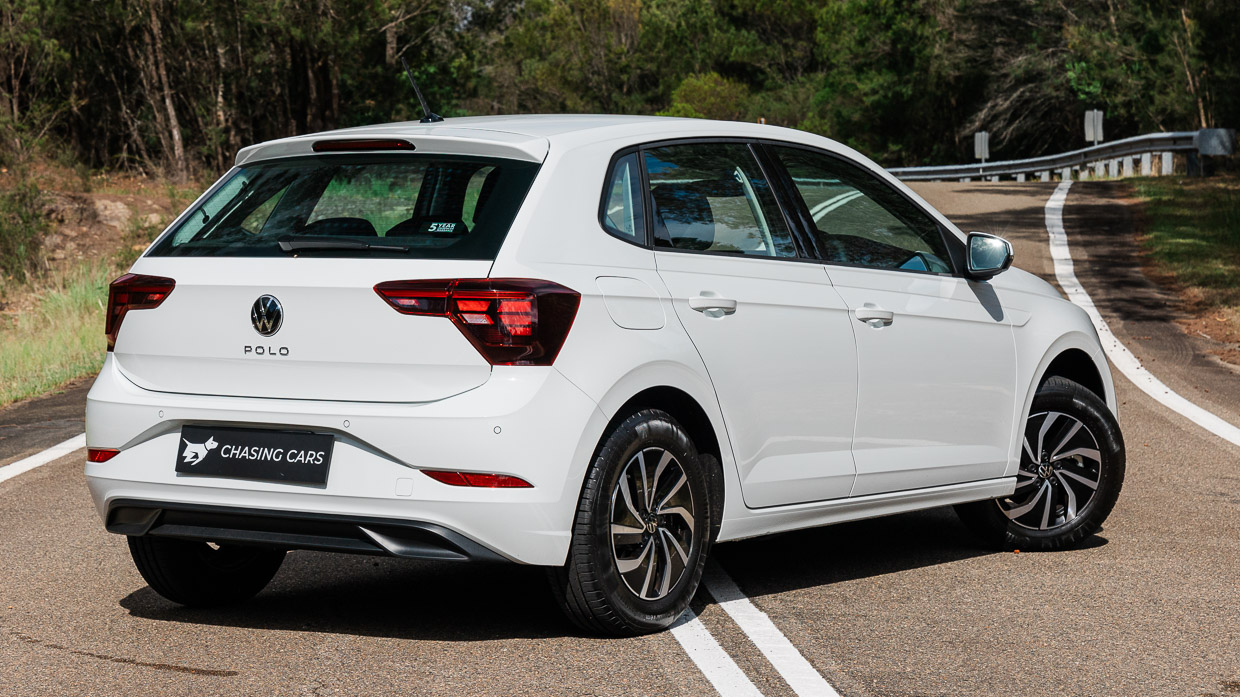
Dressed in no-cost white paintwork and sat on meagre 15-inch ‘Essex’ wheels, it’s the plain and stoic twin to the funkier T-Cross 85TSI Life riding the upswing of interest in SUV-like machinery and, even at $30,990 before on-road costs, appears destined for bigger popularity despite widespread technical similarities.
But while the Polo 85TSI Life mightn’t be nearly the coolest VW on the block, it occupies a key place on the landscape and in certain buyer hearts and minds. A cut-price Polo is still an important car, even if the cut isn’t quite as deep into buyers’ purses and wallets as it once was.
There was a time when pricing for the Polo started with a ‘one’. No surprises there…except perhaps that you could buy basic manual-equipped 70TSI Trendline from $19,290 before on-roads a little over two years ago…
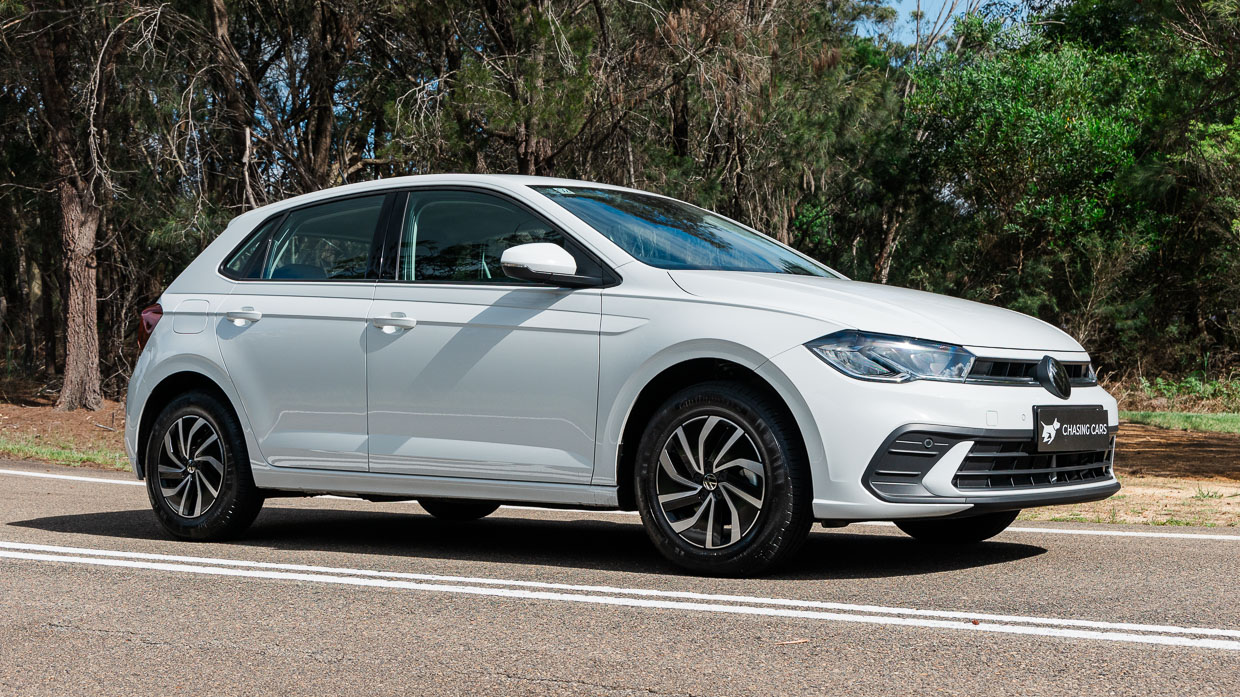
This means that the price of entry into VW ownership has jumped $10K since 2021. Yikes.
But before Volkswagen Australia strikes me off its Christmas card list, let’s clarify a few things for the sake of fairness.
Today’s Polo Life is, on paper and in specification, a higher-grade variant to yesteryear’s entry Trendline, which was effectively axed in 2022’s facelift.
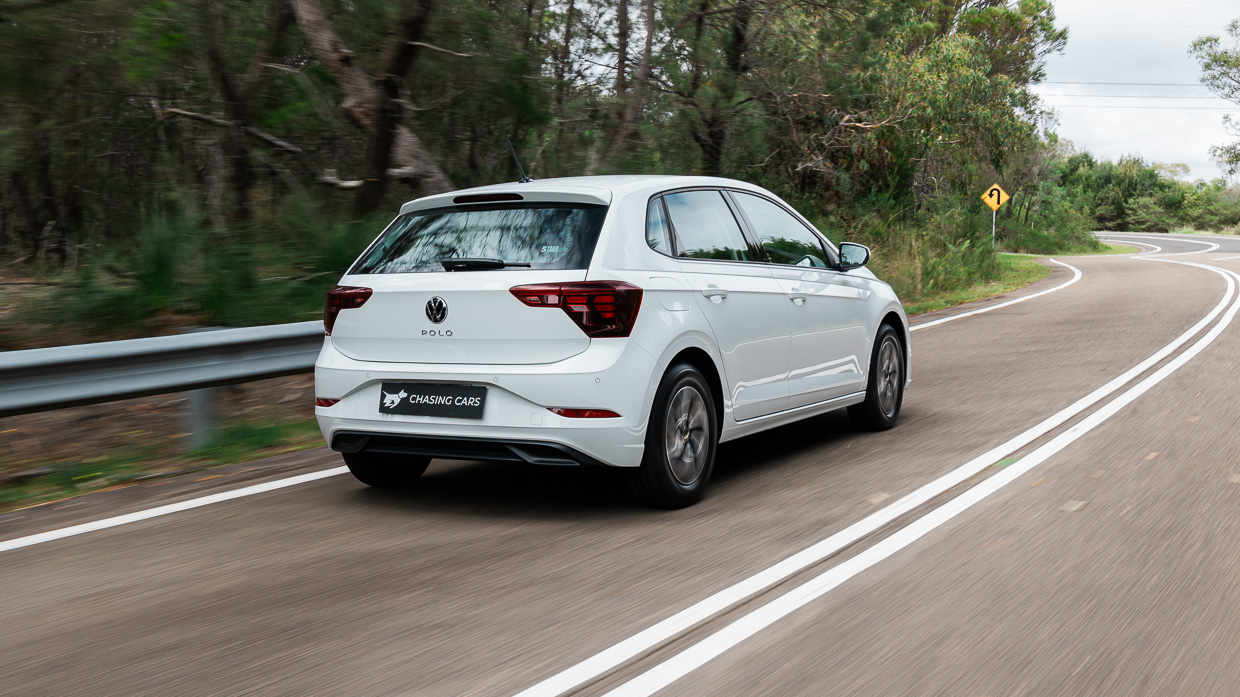
And with it went the low-output 70kW/175Nm trim of the 1.0-litre three-cylinder engine – the Life gets the lustier 85kW/200Nm unit formerly offered on the pricier Comfortline.
Polo’s old sub-$20k spec was also the (now defunct) manual option with automatics commanding a $2500 premium. Today’s 85TSI Life is dual-clutch only, effectively substituting for the old 85TSI Comfortline DSG wanting closer to $24K before on-road costs.
At that price, it competes with a diminishing field of affordable small hatchbacks such as the recently upgraded Kia Picanto (from $20,690 driveaway), the manual-or auto-paired Mazda 2 (from $21,510) the all-conquering MG3 ($19,990 driveaway), and the Toyota Yaris (from $24,800 before on-road costs).
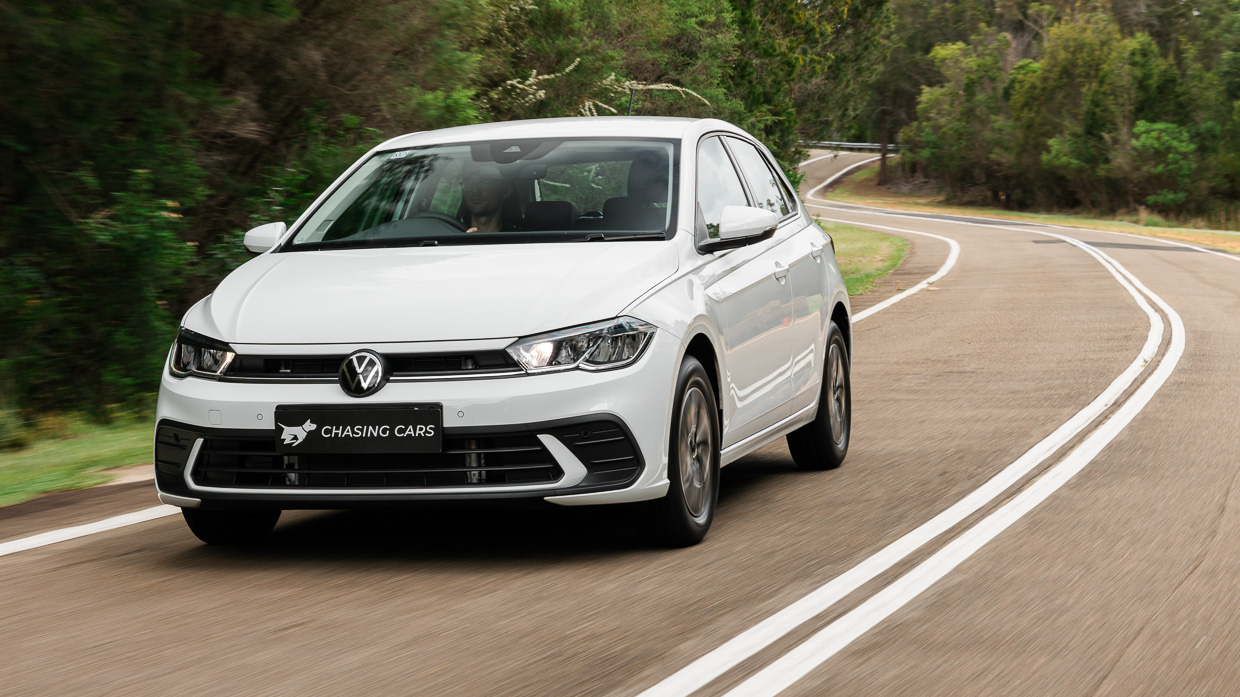
A boost in expected tech and safety features at its 2022 facelift – in line with customer preferences, says Volkswagen – produces the particularly fruity and not-so-cheap Life at the German marque’s ground floor.
Expectedly, the Polo Life delivers a fitter and nicer entry experience in some areas and remains cost conscious in others, for the hatch that steadily evolved – and grown in size – throughout its evolution.
And one that now effectively sits, in terms of size and goodness, about where the Volkswagen Golf sat just a few generations ago.
At $29,490 list, the Polo Life sits under the mid-spec Style ($32,540 list) featuring the same powertrain 85TSI and seven-speed DSG automatic-equipped powertrain.
The lineup tops out with the performance Polo GTI ($39,690) that brings a 147kW/320Nm 2.0-litre turbocharged four with a six-speed DSG.
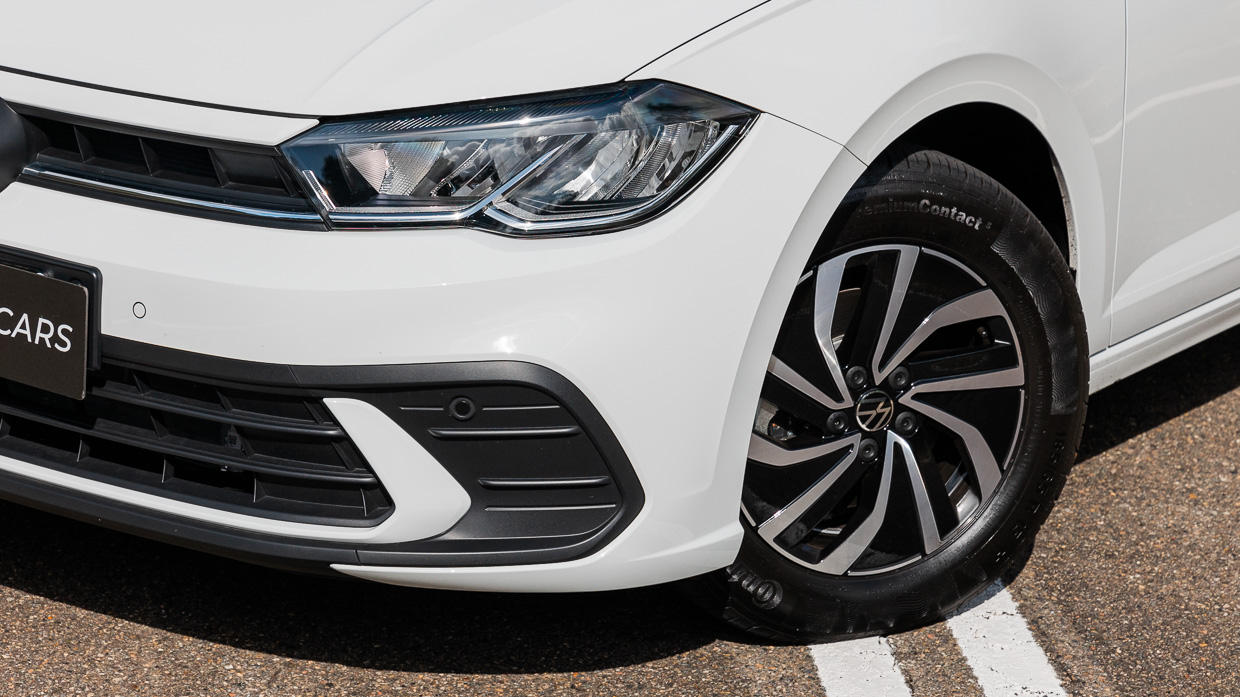
Driveaway pricing for the Polo Life is around $34,350 in basic trim, which includes:
A $1700 Vision and Tech package is available, that adds upgrades such as Discover-type 8.0-inch media, larger Digital Cockpit Pro instrumentation, Voice control, wireless Apple CarPlay and Android Auto, adaptive cruise control with Travel Assist (semi-auto steering).
The Polo Life is offered in six colours, five of which being metallic or pearlescent effect paint commanding a $600 upcharge.
The entry Polo is a case of great platform, great model, great fundamental chassis and great engine. But it stops short of being a great drive because of a couple of key reasons.
Under the bonnet, the powertrain is a funny thing to behold: the little one-litre three-cylinder appears less like the engine and more a curious mechanical appendage to the huge seven-speed dual-clutch assembly, well over twice the size, sat below it. It’s a tiny mill.
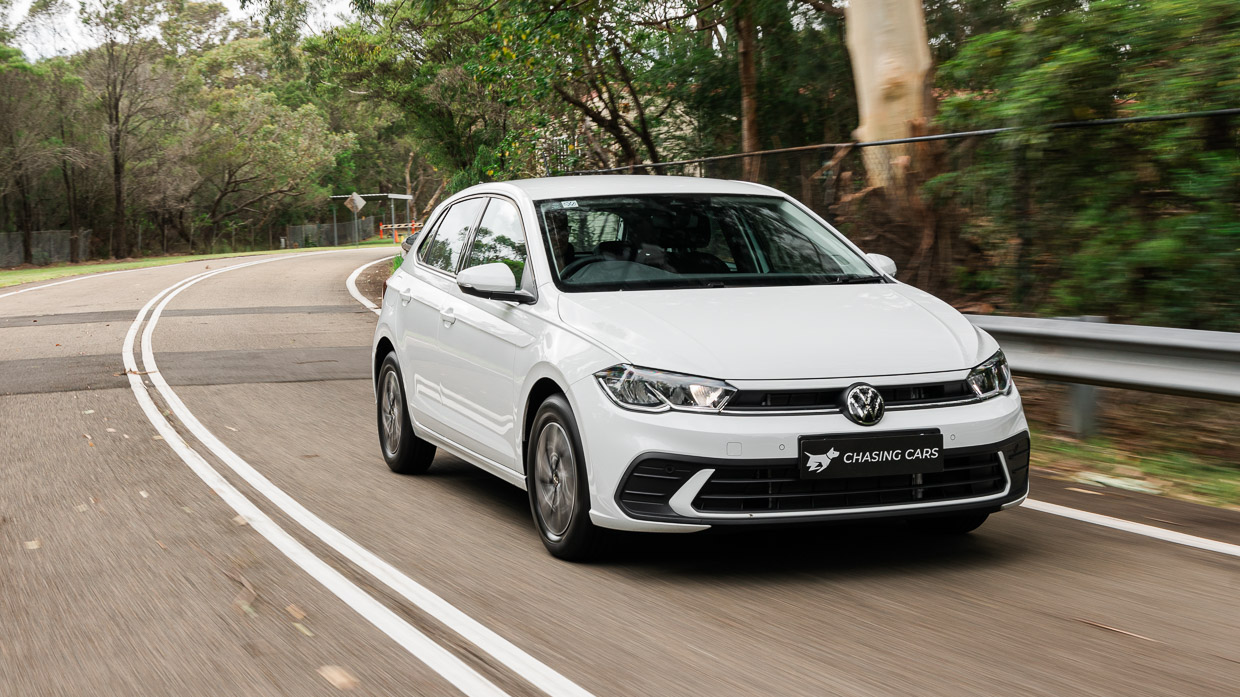
And yet, it’s a great little unit, especially in higher-output 85kW form with a remarkable specific torque figure of 200Nm per litre, which you can also find in the Skoda Kamiq small SUV. Put simply, a five-litre take on this engineering application craftwork would yield 1000Nm…
Thing is, feisty little three-pots tend to have a particular character: a raspy rort to the soundtrack and an impressively fierce low- to mid-range torque hump.
This type of engine is a real joy when paired with the conventional manual transmission, because the driver can tap the engine’s sweet spot directly and precisely. But when it’s paired with auto, much can go not much wrong but not terribly right…
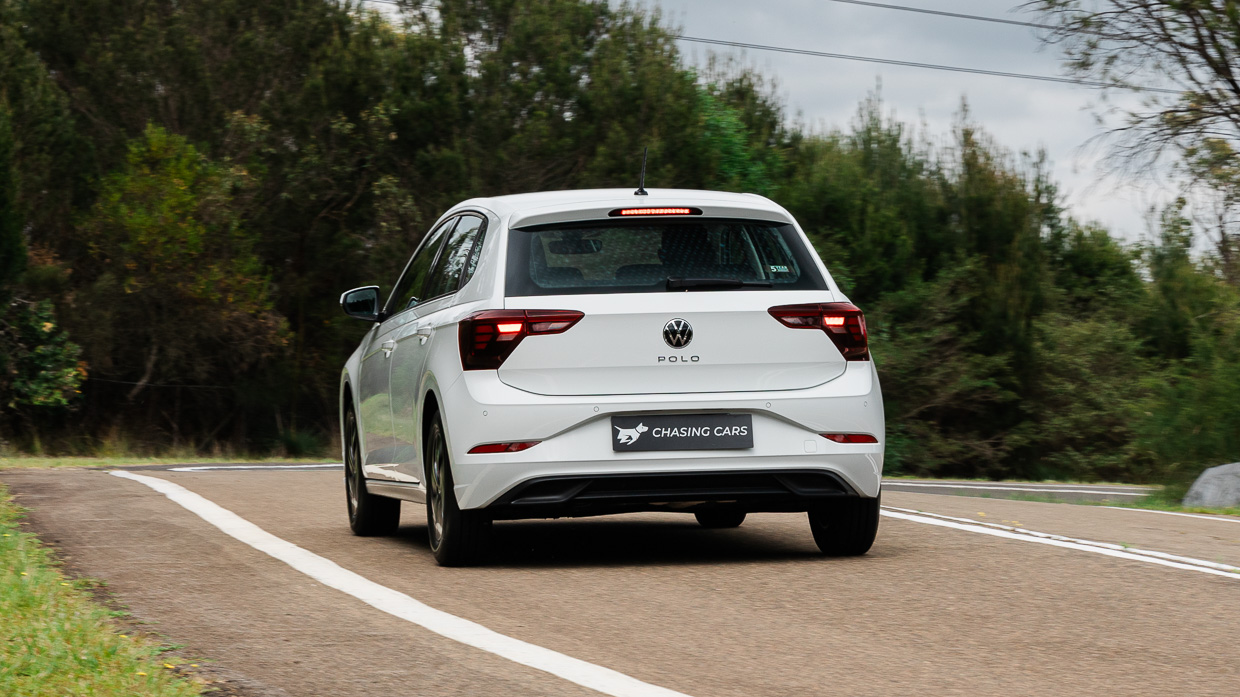
The auto in question is a dry-type dual-clutch transmission: not a bad unit if one prone to occasionally abrupt cog-swapping. But as a powertrain combination, the 1.0L and seven-speed are not the happiest of bedfellows.
It’s simply too lazy and lethargic in normal drive mode – a calibration clearly chosen to chase low fuel consumption – and too mid-peaky in sport.
Whichever of the two usable modes you choose, the drivability is left wanting around town and in traffic, which is precisely where a great urban runabout needs to shine.
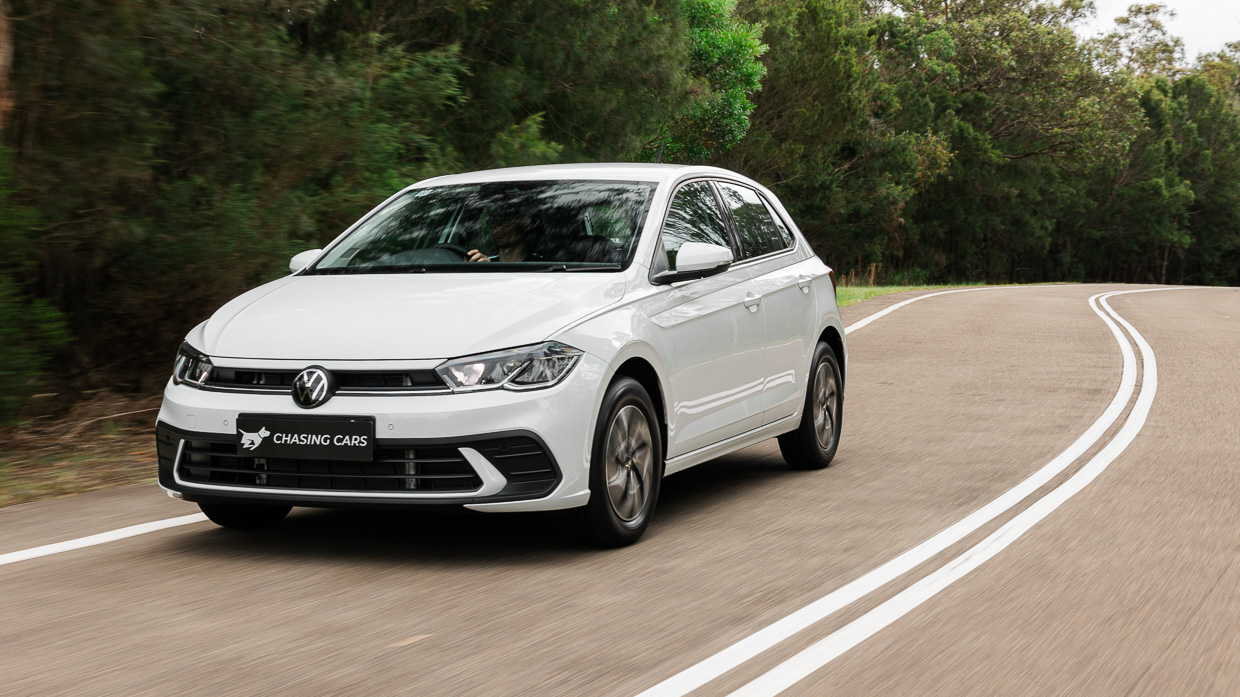
The little three-cylinder, by its nature, needs rpm to boogie: specifically 2000rpm for its 200Nm peak to arrive.
Below that, throttle response is quite spongy. You’re forced to give more throttle than is really necessary for even moderate acceleration, and at a constant speed the transmission goes for the tallest gear possible, which creates a boomy drone in the cabin.
It does get along just fine, if sonically and characteristically in labour. Volkswagen claims 5.4L/100km combined, but in the real world our example sat around the mid-eight-litre mark indicated in town as a short-term sample, with its on-board trip computer calculating a longer-term (636km) average of 7.6L.
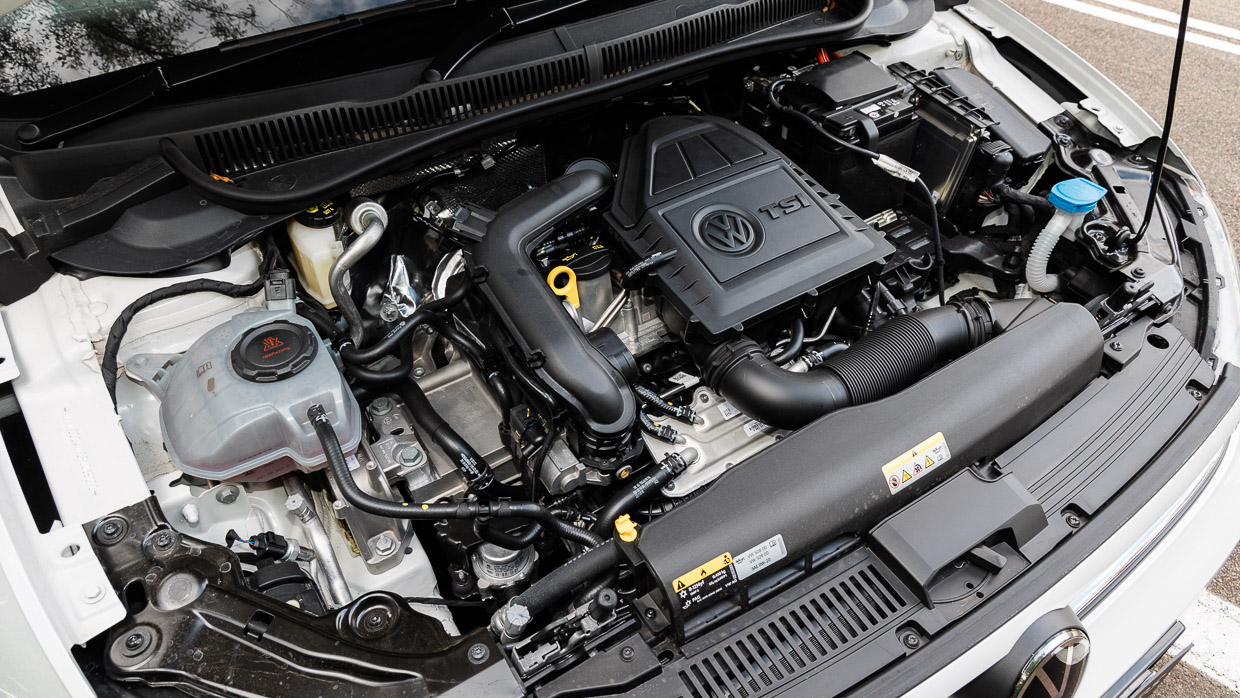
In fairness, some of this frankly daunting consumption is down to sporadically tapping the transmission controller to sport during acceleration to alleviate the lazy drivability. And it works to a point…
While sport does stick a larger rocket up the Polo’s tailpipe, it’s still not pleasingly drivable. Initial response remains laggy, the mid-range torque hump rushes harder, and while the hatch gets properly punchy, the actual powertrain drive dips and crests like the Manly ferry in a storm.
Sport mode is too unruly to be kept activated around town, with sudden lift-offs to counter the fluctuating thrust occasionally returning a thud in the self-shifting driveline.

You get none of these foibles with this engine paired with a six-speed manual transmission…that Volkswagen sadly no longer offers in the lineup.
Sink the boot, man the paddle shifters and aim Polo down a backroad and the powertrain gets better on the boil. And it’s married to a chassis with depth and poise and guided by steering that is clear, friendly and accurate.
It’s a nice party trick and there’s proper driver-oriented fun factor, though this forum isn’t really where a cost-conscious city runabout really needs to deliver, is it?
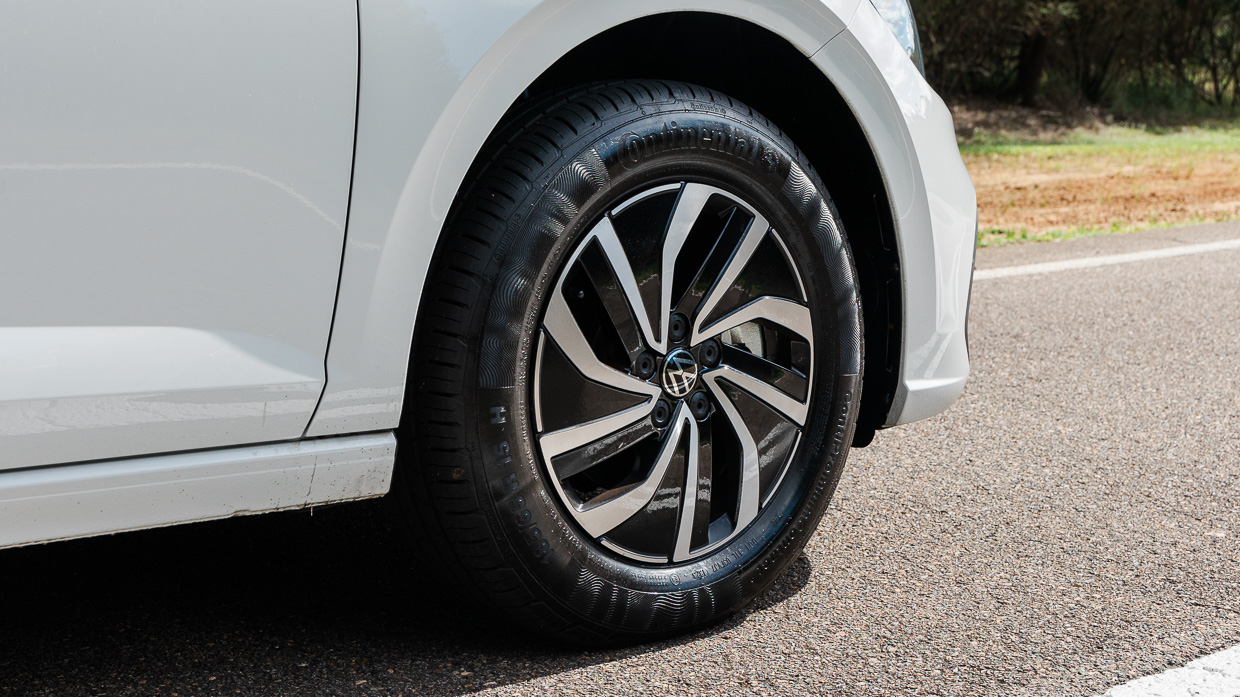
The Polo’s dynamic talent is also hamstrung to a degree by the rolling stock.
Narrow and chubby 185/60 hoops – albeit quality Continental Premium Contact 5 rubber – on tiny 15-inch rims aren’t the last word in lateral grip once you push on, so a GTI-lite experience the Polo Life most certainly is not. The fun factor, should you choose to go there, is somewhat limited.
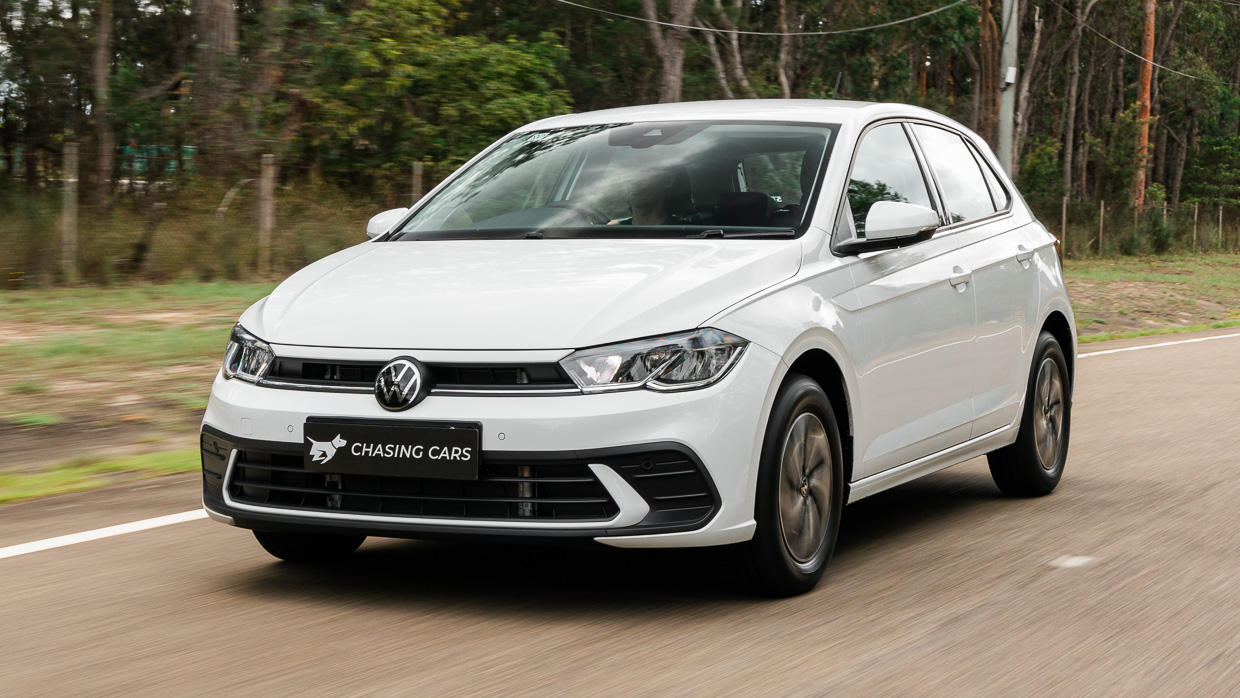
Nor is the ride quality particularly polished despite the Polo’s nature and the wheels it fits. Across big bumps, there’s real discipline to the compliance, though the little Volkswagen is perhaps fizzier and busier across smaller road imperfections than it needs to be.
This all said, it feels solid, well executed and there’s a real maturity to its nature. It’s also light on its rubber feet – it weighs just 1118kg – and, despite a few jagged edges in powertrain and ride, it’s surely one of the most fundamentally resolved compact hatchbacks on road.
The Polo cabin is as handsome and smartly packaged as it was back when this sixth generation first lobbed back in 2018.
This was ‘new look’ Volkswagen design freshness upon debut, and the smart maturity that could once be had from a tenner under $18K doesn’t quite punch as well six years on and with a near-$30K price tag.
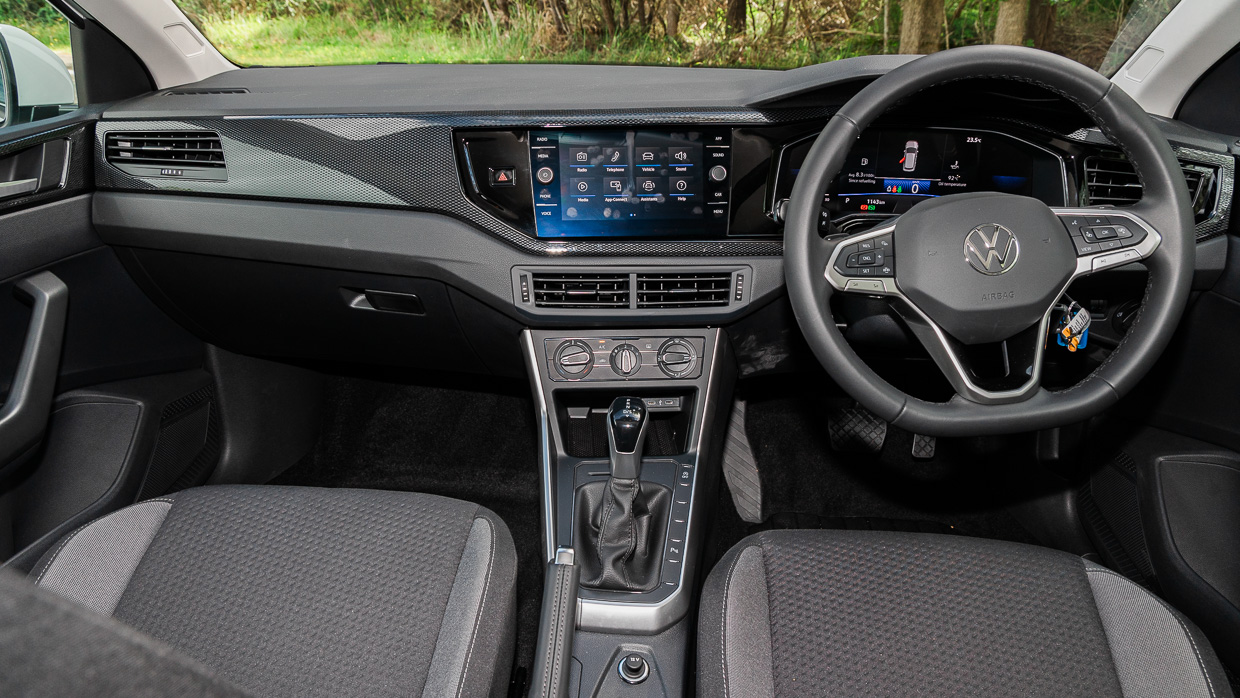
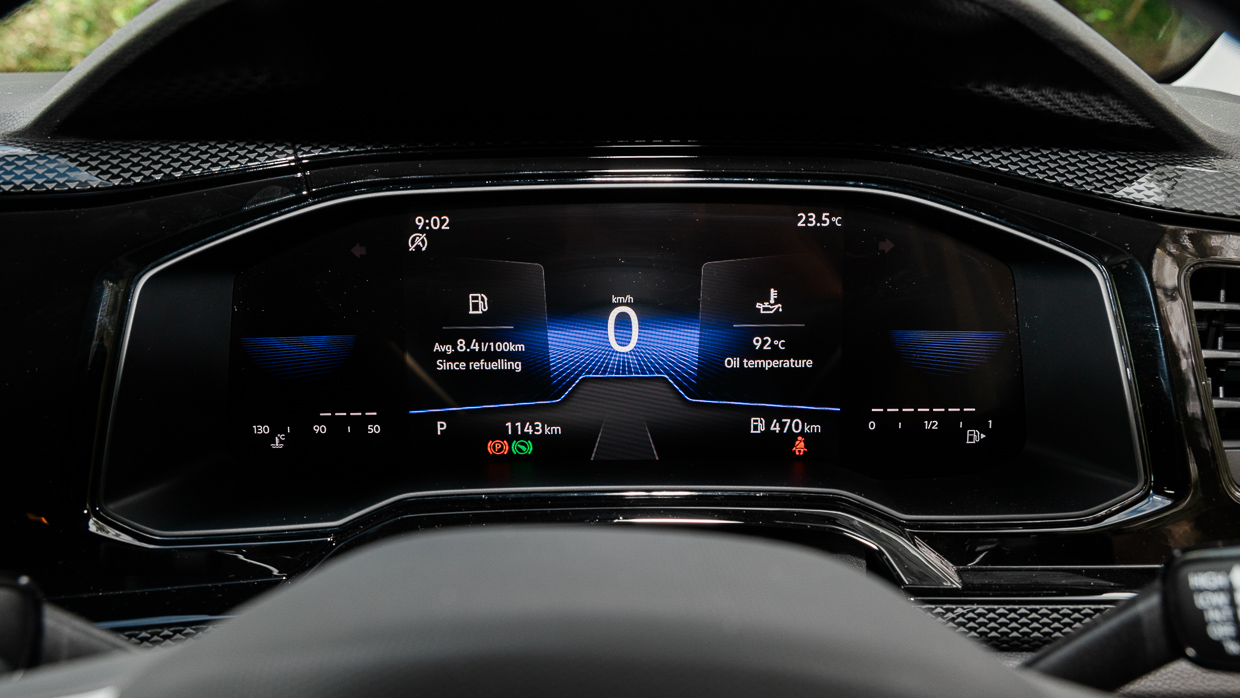
Again, the Polo Life spec is perhaps a little healthier than the former pre-facelifted Trendline trim, though not by much and in few areas.
The design looks clean, simple and adult-oriented, anchored by a lovely leather-trimmed multifunction wheel – with paddle shifters – and dual 8.0-inch digital screens for driver instrumentation and media.
And what the basic digital window dressing lacks the whiz-bangery of the 10.25-inch Digital Cockpit Pro screen – including fancy navigation skin – that’s part of the $1700 Vision ad Tech package, it makes up for in nice, unpretentious clarity.
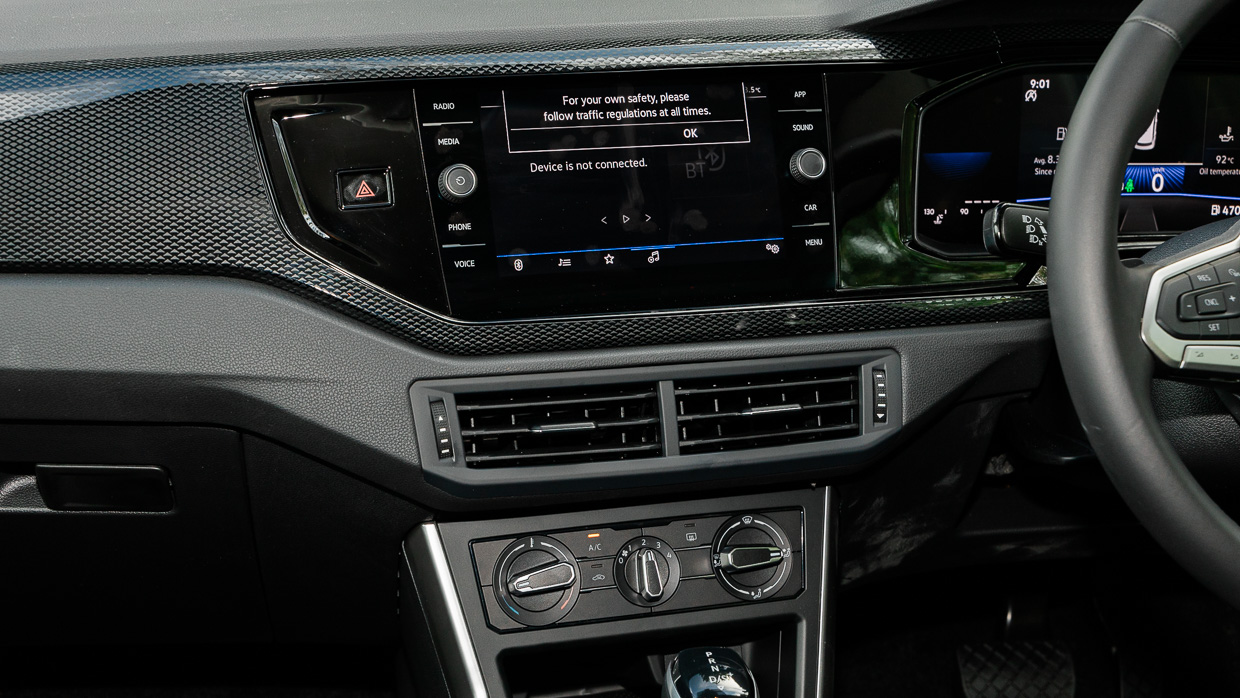
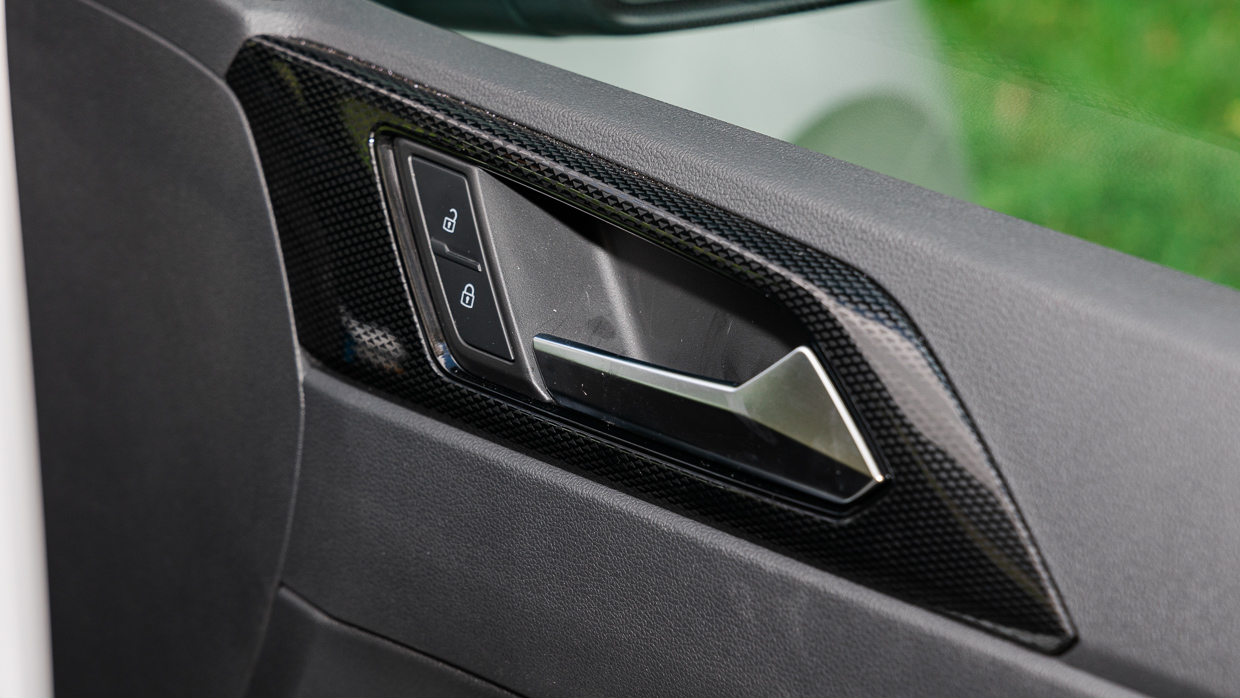
Volkswagen balances satiny and squishy surfaces in your forward vision – mostly across the dash top and fascia – with hard and shiny plastics in less conspicuous areas, though the door cards look and feel cheap for this price point. The faux-carbon-like garnish is a neat look.
In some ways, the Polo Life’s modest nature makes for key improvements, especially compared with some Golf features your reviewer tends to gripe about.
The single-zone air-con offers handy dials and buttons rather than silly ‘digital’ sliders and media screen submenu digging, while the physical buttons on the wheel are vastly better than the haptic touch rubbish found on other model variants.

Even the conventional mechanical handbrake feels welcoming and the stop-start button on the console is easily accessible.
Elsewhere, it’s not so great. The key barrel ignition is low rent for anything at this price and the extremely low-set front seats get clunky and rudimentary seat adjusters for what are somewhat sporty if otherwise unremarkable buckets trimmed in hardy, basic cloth.
Additionally; the hexagonal cup holders seem ad hoc, the console is festooned with blank panels that betray the lack of switches/features and the door bins could benefit from some cursory flocking.
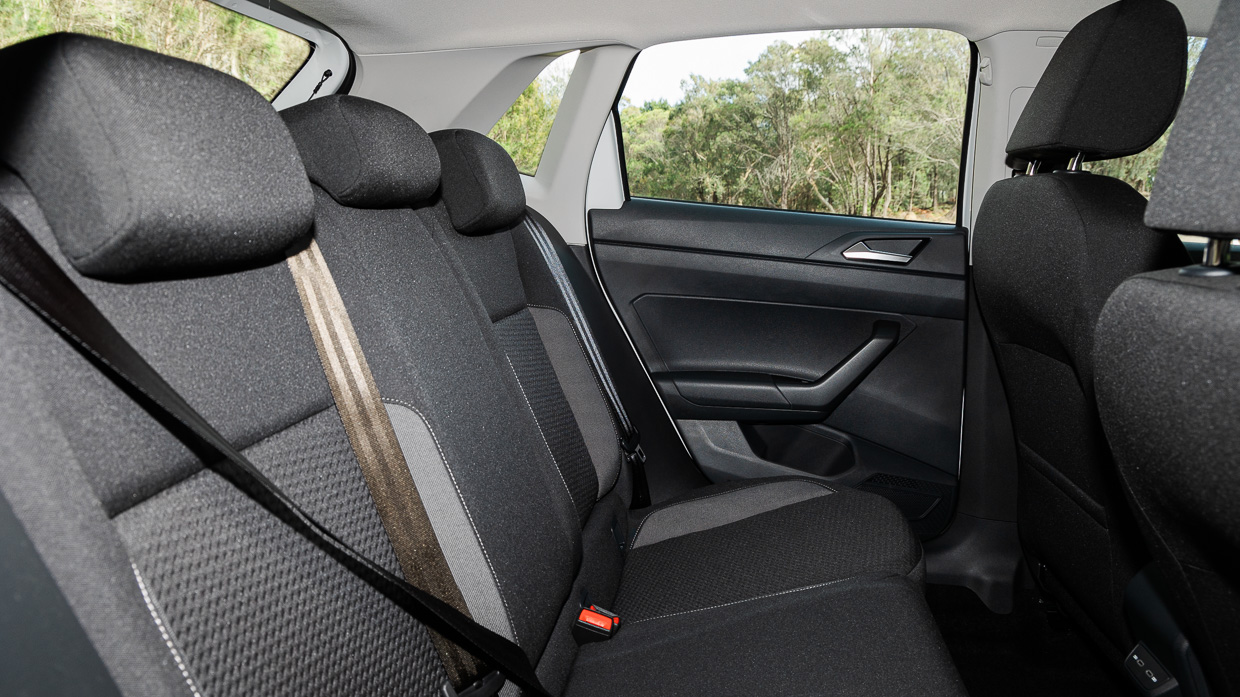
These are all areas that drag the vibe downmarket a little too far, though counterpoints are the nice rubberised inductive phone charging pad and dual USB-C outlets in both rows for a total of four.
The Composition-grade media system is just okay – no sat-nav, wired Apple CarPlay and Android Auto – but if this really bugs you the wireless stuff is part of the aforementioned Vision and Tech upcharge.
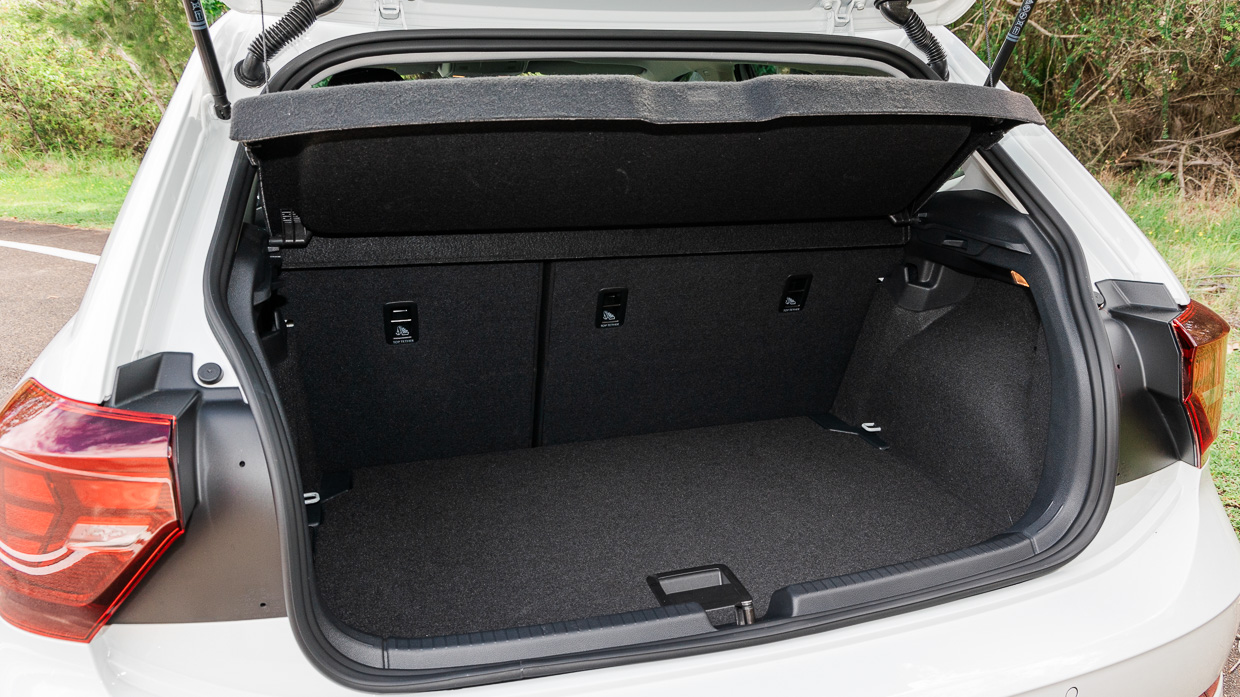
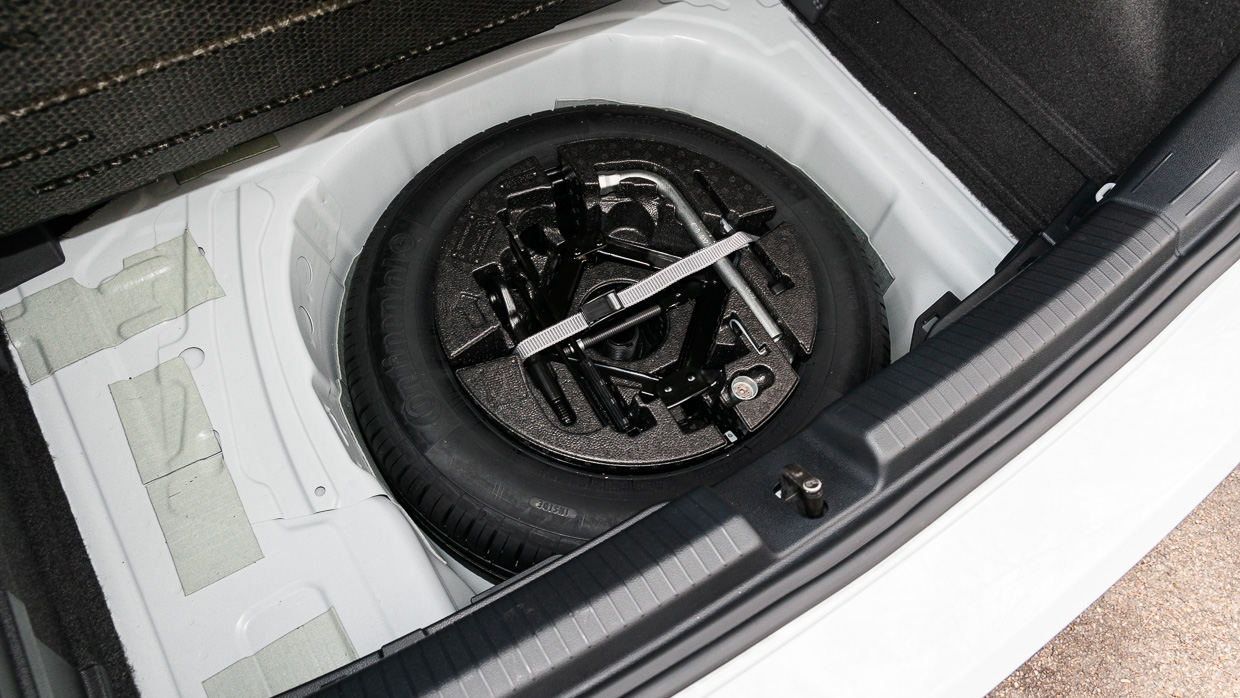
Row two room is, by compact city hatchback measures, pretty decent, though the fitout is basic and rear passengers must contend with a lack of ventilation and no centre armrest (meaning no rear cup holders). However, the door bins are large enough for smaller bottles.
At 351 litres, the boot space is pretty handy and not much smaller than that of its larger Golf sibling. A nice inclusion is the space saver spare wheel under the boot floor.
One of the justifications for Polo’s circa six-grand entry-level price hike at the 2022 facelift was the lift in active safety features from the ground level of the lineup.
At the time, the outgoing pre-facelift model had carried a score of five stars for ANCAP under 2018 protocols, but last year the newly facelifted version was retested under stricter 2022 criteria, earning the same five-star safety rating.
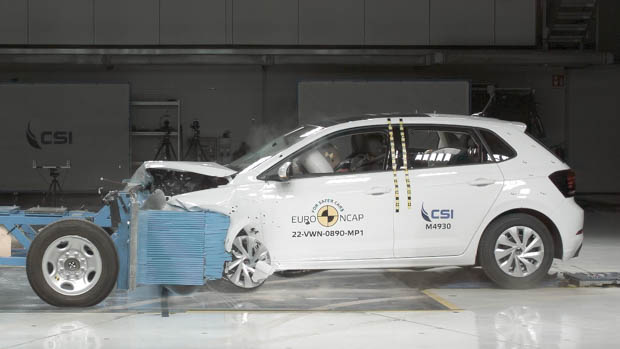
Armed with more advanced active safety technology and a new front-centre airbag; the Polo scored 94 percent for adult occupant and 80 percent for child occupant protection, with 70 percent apiece for both vulnerable road user and safety assist.
The Polo Life fits the following features as standard:
You have to pay extra for Adaptive Cruise Control and Travel Assist ($1700 Vision and Tech package), or step up to the Style variant to get side assist, rear traffic alert, proactive occupant protection system, and Matrix LED headlights.
The Polo’s servicing schedule is a typical 12 months or 15,000km between visits.
Volkswagen offers conditional servicing plans for three years ($1350) and five years ($2300) for the Polo 85TSI automatic, which works out considerably cheaper in the long run than paying for individual capped price visits, which currently totals at $3095 for five years.
That’s a fair bit pricier than Toyota’s Yaris, which costs $735 for three years and $1225 for five years.
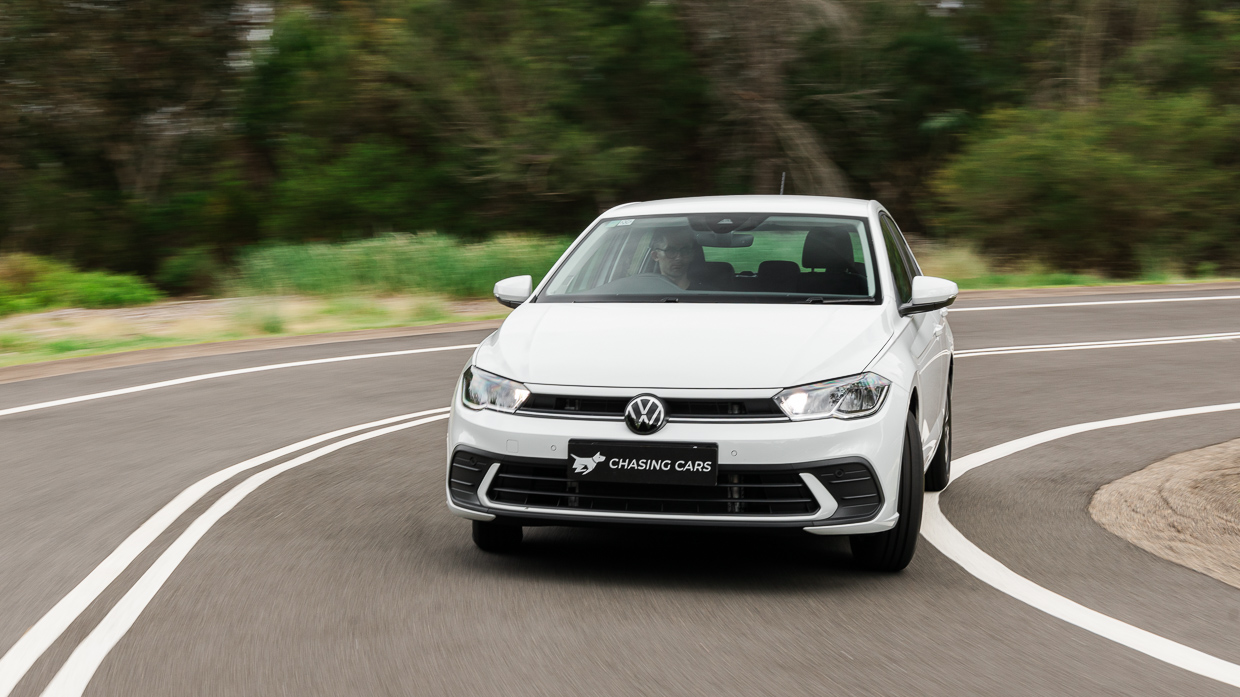
Warranty for the Polo is five years of unlimited-kilometre coverage.
As discussed, the 85TSI auto combination isn’t what you’d call a fuel miser. Expect the low-seven to high-eight-litre mark for fuel consumption if you’re spending the lion’s share of driving in city or metro areas. It also requires premium 95-octane fuel.
It’s worth noting that the Polo’s as-tested 7.6L/100km fuel figure is more than double the consumption we’ve seen in the Yaris Hybrid, which sipped just 3.3L/100km…
The base Polo Life remains a sensible choice in the compact hatchback, one with a smattering of goodies to sweeten its pitch while offering solid safety credentials and a decent chassis.
But in Polo-land, the fruitier mid-spec Style ($32,540 list) stacks up better on core value, while the much pricier GTI ($39,690 list) is really the sweetest and most complete spot in the range.

Really, our test subject arch nemeses in the family is the funkier, more characterful and slightly more flexible T-Cross 85TSI Life ($30,990 list), which adds just $1500 of outlay.
Yes, the entry point to Volkswagen ownership is nicer and safer than ever, but at nudging $35K on road it’s not nearly the bargain it was just a few years ago.

And while precious few who bought Polos opted for the six-speed manual version (in 85TSI grades), it easily made for the more compelling powertrain than the ‘dry’ DSG version did and still does.
But if you’re not fussed about the finer nuances of drivability and ride, the bread and butter Polo remains best in class of the compact hatchback bunch. And it managed to continue to do so six years on and despite its constant pricing creep.
Key specs (as tested)
About Chasing cars
Chasing Cars reviews are 100% independent.
Because we are powered by Budget Direct Insurance, we don’t receive advertising or sales revenue from car manufacturers.
We’re truly independent – giving you Australia’s best car reviews.
The estimate provided does not take into account your personal circumstances but is intended to give a general indication of the cost of insurance, in order to obtain a complete quote, please visit www.budgetdirect.com.au. Estimate includes 15%^ online discount.
^Conditions Apply
Budget Direct Insurance arranged by Auto & General Services Pty Ltd ACN 003 617 909(AGS) AFSL 241 411, for and on behalf of the insurer, Auto & General Insurance Company Limited(ABN 42 111 586 353, AFSL 285 571).Because we don’t know your financial needs, we can’t advise you if this insurance will suit you. You should consider your needs and the Product Disclosure Statement before making a decision to buy insurance. Terms and conditions apply.
Indicative quote based on assumptions including postcode , 40 year old male with no offences, licence suspensions or claims in the last 5 years, a NCD Rating 1 and no younger drivers listed. White car, driven up to 10,000kms a year, unfinanced, with no modifications, factory options and/or non-standard accessories, private use only and garaged at night.
^Online Discounts Terms & Conditions
1. Discounts apply to the premium paid for a new Budget Direct Gold Comprehensive Car Insurance, Third Party Property Only or Third Party Property, Fire & Theft Insurance policy initiated online on or after 29 March 2017. Discounts do not apply to optional Roadside Assistance.
2. Discounts do not apply to any renewal offer of insurance.
3. Discounts only apply to the insurance portion of the premium. Discounts are applied before government charges, taxes, levies and fees, including instalment processing fees (as applicable). The full extent of discounts may therefore be impacted.
4. We reserve the right to change the offer without notice.